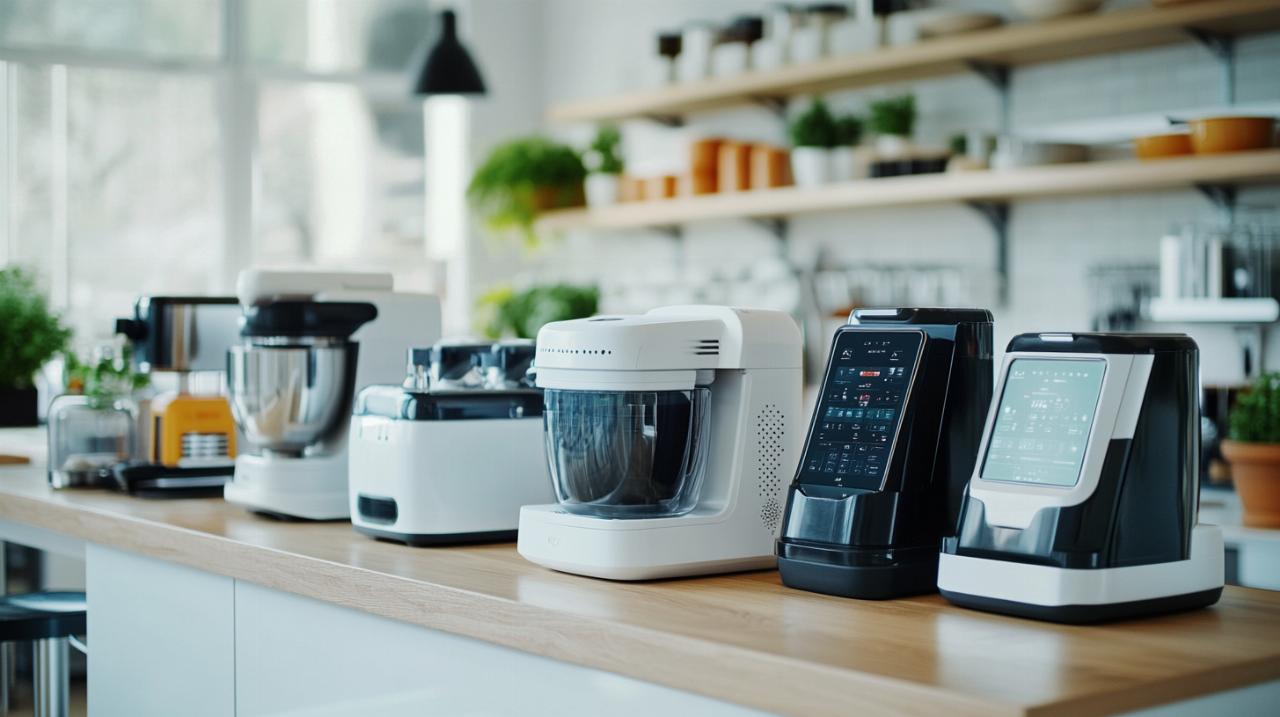From the compact countertop models to the robust multi-attachment machines, choosing a kitchen robot or food processor demands careful consideration of your unique culinary habits and household circumstances. The marketplace presents an astonishing array of options, each promising to revolutionise how you prepare ingredients, yet navigating these choices requires a methodical approach that balances practical requirements with realistic expectations about how you'll actually use the appliance once it reaches your kitchen.
Understanding your kitchen requirements and automation goals
Before committing to any purchase, taking a moment to genuinely assess which kitchen tasks consume the most time or cause the greatest frustration proves invaluable. Many households find themselves drawn to gleaming appliances that promise comprehensive functionality, yet the reality often involves a machine that handles perhaps two or three regular operations whilst the remaining attachments gather dust in the cupboard. Consider whether you're preparing meals for a bustling family of five, where batch processing vegetables becomes a daily necessity, or whether you're cooking for one or two people where smaller quantities and simpler operations might suffice. The Magimix Food Pro 4200XL, scoring a perfect ten out of ten in recent testing, demonstrates exceptional performance with its three-litre capacity and nine attachments, yet its considerable bulk makes it better suited to kitchens where counter space isn't at a premium and where the variety of functions justifies the footprint.
Identifying which kitchen tasks you actually want to automate
The temptation to automate every conceivable kitchen operation must be weighed against the practicality of your actual cooking routine. If your culinary adventures primarily involve chopping onions, slicing vegetables for stir-fries, and perhaps shredding cheese for topping dishes, investing in a machine with dough hooks, citrus juicers, and spiralising attachments may represent unnecessary complexity. The Kenwood MultiPro Go, priced at a modest forty-nine pounds, offers a streamlined approach with its single speed setting and three basic attachments, proving that sometimes restraint in features translates to greater usability. When you visit shopline website or any reputable retailer, observe which attachments actually appeal to your regular meal preparation rather than aspirational recipes you might attempt once in a blue moon. The Ninja Food Processor with Auto-IQ technology provides seven operational modes and five attachments for roughly one hundred and twenty pounds, positioning itself as a middle-ground option for those who want versatility without overwhelming complexity.
Balancing manual cooking skills with automated convenience
Whilst kitchen automation undeniably saves time and physical effort, maintaining some connection to manual preparation techniques preserves both culinary skills and the sensory engagement that makes cooking satisfying. A food processor excels at repetitive tasks that would otherwise consume precious minutes, yet relying exclusively on mechanical processing can distance you from the tactile feedback that helps develop intuition about ingredient textures and readiness. The pulse function, available on models across various price points including the Cuisinart Easy Prep Pro at eighty pounds, allows for incremental control that bridges the gap between fully manual chopping and continuous automated processing. This feature proves particularly valuable when preparing ingredients that require careful attention to consistency, such as herb pastes or nut mixtures, where the difference between perfectly processed and overworked can occur within seconds.
Space considerations and practical storage solutions
The romance of owning a powerful kitchen appliance quickly fades when confronted with the daily reality of limited worktop space and already crowded cupboards. British kitchens, particularly in urban flats and terraced houses, rarely offer the expansive counters seen in glossy magazine spreads, making the physical dimensions of any appliance a crucial consideration that extends beyond mere aesthetics to practical usability.
Measuring your available worktop and cupboard space
Before falling for any particular model, physically measuring the available space where the appliance will live prevents the disappointment of discovering your new acquisition won't fit comfortably in its intended home. Consider not just the footprint of the base unit but also the clearance required above for removing the bowl and operating the machine without scraping against overhead cupboards. The Bosch MultiTalent 8, whilst offering an impressive 3.9-litre capacity and seven attachments, explicitly notes in reviews that it occupies considerable space, making it better suited to kitchens with dedicated appliance areas. For those working with more modest dimensions, the Salter Compact Prep presents a one-litre capacity that sacrifices versatility for a genuinely compact profile, though its limited functionality means carefully considering whether its reduced capabilities align with your needs.
Compact models versus full-sized kitchen processors
The division between compact and full-sized processors represents more than merely physical dimensions, extending into fundamental questions about capacity and operational power. A family regularly preparing meals for four or five people benefits from the two-and-a-half to three-litre bowl capacity recommended by industry guidance, as smaller machines require batch processing that negates much of the time-saving advantage. The KitchenAid 2.1-litre model, scoring nine out of ten in recent assessments, occupies a middle ground with its moderate capacity and sharp blades that excel at chopping tasks, though some reviewers noted minor rattling in certain components. Conversely, individuals or couples might find that compact options like the Magic Bullet Kitchen Express at seventy pounds provide sufficient capacity for smaller quantities whilst offering the dual functionality of processing and blending in an appliance that stores more easily than larger alternatives.
Evaluating features that match your cooking style
The proliferation of features across modern food processors creates both opportunity and confusion, as manufacturers compete to differentiate their offerings through technological innovations and additional attachments that may or may not enhance your actual cooking experience. Distinguishing between genuinely useful capabilities and marketing embellishments requires honest reflection about your culinary habits and aspirations.

Essential attachments and functions worth having
Certain functions prove universally valuable across diverse cooking styles, forming the core capabilities that justify investing in a food processor rather than persisting with manual preparation methods. Slicing discs that produce uniform thickness transform salad preparation and ensure even cooking in dishes like gratins, whilst shredding attachments make quick work of vegetables for coleslaw or cheese for topping. The Sage Paradice 9, crowned best overall at approximately two hundred and fifty pounds, presumably earns its accolade through a combination of reliable performance across these fundamental tasks alongside more specialised functions. The Ninja 3-in-1 offers particular versatility by combining food processing with blending capabilities through its eight attachments, though reviewers noted it performed less impressively when shredding vegetables, highlighting how even highly-rated machines may excel in some areas whilst proving adequate rather than exceptional in others.
Avoiding gimmicky features you'll never actually use
Marketing materials for kitchen appliances frequently emphasise exotic capabilities that sound impressive but rarely find application in everyday cooking. Spiralising attachments enjoyed a period of popularity during the courgetti trend, yet many households discovered that the novelty wore thin after initial experiments, leaving the attachment gathering dust alongside other specialist pieces. The ProCook 3L food processor, recognised as best for ease of use at one hundred and forty-nine pounds, suggests that sometimes straightforward functionality trumps elaborate feature sets that complicate operation without adding meaningful value. When evaluating any model, consider whether you've actively sought out particular functions in your current cooking routine, rather than imagining hypothetical scenarios where you might employ them. The Russell Hobbs Desire, offering respectable performance at seventy-five pounds, demonstrates that budget-conscious options can deliver satisfactory results for fundamental tasks without the premium pricing associated with more elaborate machines.
Motor power and performance reliability
The heart of any food processor lies in its motor, determining both the efficiency with which it handles ingredients and the longevity you can reasonably expect from the appliance. Understanding the relationship between wattage specifications and actual performance helps decode manufacturer claims and select a machine that won't struggle with regular use or fail prematurely.
Understanding wattage requirements for different tasks
Motor power, measured in watts, provides a rough indication of the machine's capability to process dense or tough ingredients without labouring or overheating. The Magimix 4200XL employs a 950-watt motor that contributes to its consistent performance across diverse tasks, whilst more modest machines like the Salter Compact Prep operate with just 200 watts, reflecting their positioning as convenient tools for lighter-duty applications rather than workhorses for demanding preparations. Chef Adria Wu, offering professional perspective on these appliances, suggests that models priced below fifty pounds may lack the durability for sustained use, implicitly acknowledging that adequate motor construction requires manufacturing investment that inevitably influences retail pricing. The Ninja 3-in-1 boasts an impressive 1200-watt motor that powers its blending and processing functions, though higher wattage doesn't automatically translate to superior results if the blade design or bowl configuration proves suboptimal.
Durability and Longevity of Different Motor Types
Beyond raw power specifications, the construction quality of the motor assembly influences whether your food processor becomes a kitchen stalwart or a disappointment requiring replacement after limited service. Direct-drive motors, where the blade shaft connects straight to the motor without intermediate gears, generally offer superior reliability by eliminating components that can wear or fail, though this design often results in bulkier housing to accommodate the motor size. The Cuisinart FlexPrep, positioned as best value amongst compact options at seventy pounds, presumably balances motor capability with cost constraints, though prospective buyers should weigh the savings against potential differences in operational lifespan compared to premium alternatives. Reviews noting that certain models struggle with specific tasks, such as the Ninja 3-in-1's less impressive vegetable shredding or the Russell Hobbs Desire's incomplete processing of some ingredients, highlight how motor power must work in concert with blade sharpness and bowl design to deliver satisfactory results across the full range of food processing operations.
Making an informed purchase decision
After evaluating your requirements, space constraints, desired features, and performance expectations, the final stage involves researching specific models through reliable sources and comparing options across the price spectrum to identify the appliance that best matches your priorities and budget.
Reading genuine customer reviews and expert assessments
Professional testing by culinary experts and technology reviewers provides valuable insights into how appliances perform under controlled conditions, assessing factors like processing consistency, ease of use, and cleaning requirements that might not be immediately apparent from manufacturer specifications. Recent comprehensive testing in November 2025 evaluated thirteen models across brands including Kenwood, Magimix, Cuisinart, Ninja, and others, applying consistent criteria that examined the range of features, actual performance results, operational simplicity, cleaning convenience, and overall design quality. These assessments revealed that the ProCook food processor excelled in user-friendliness, whilst the Kenwood MultiPro OneTouch Pro, priced at two hundred pounds, earned recognition as the best option within the Kenwood range despite the brand offering more economical alternatives. Customer reviews complement expert testing by revealing how appliances hold up over months and years of regular use, identifying issues like components that crack, motors that fail prematurely, or attachments that prove frustratingly difficult to clean despite initial impressions suggesting otherwise.
Comparing models across different price points and brands
The food processor market spans an enormous price range from approximately forty pounds to well over four hundred pounds, reflecting genuine differences in build quality, motor power, attachment variety, and brand positioning. The Cuisinart Easy Prep Pro at eighty pounds demonstrates that attractive design and excellent functionality need not command premium pricing, though its 1.9-litre capacity might prove limiting for larger households. At the upper end, the Magimix 4200XL justifies its four-hundred-and-forty-pound price through exceptional consistency, robust construction, and comprehensive attachments, though buyers must honestly assess whether they'll utilise sufficient functionality to warrant the investment. Kenwood offers free delivery on orders exceeding forty pounds, a consideration that effectively reduces the total cost of their MultiPro Go when purchased directly, whilst their thirty-day return policy provides reassurance for those uncertain about their selection. The distinction between food processors and stand mixers warrants consideration, as the latter excel at tasks like bread dough and cake batters where prolonged mixing benefits from the design of planetary action mixers, suggesting that some households might ultimately benefit from owning both appliances rather than expecting a single machine to handle every conceivable kitchen task with equal proficiency.

